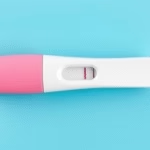Understanding Implantation Bleeding 17 DPO
Implantation bleeding at 17 days past ovulation (17 DPO) is a significant indication in the early stages of pregnancy. This occurrence refers to the slight bleeding that may happen when a fertilized egg implants itself in the uterine lining. For many women, this brief episode may be one of the early signs of pregnancy and is often confused with a regular menstrual period. Unlike menstrual bleeding, which tends to be heavier and more prolonged, implantation bleeding is typically light and lasts only a few hours to a couple of days. Women observing this at 17 DPO may already be looking for signs to confirm their pregnancy. Understanding the differences and implications of this occurrence is essential for those trying to conceive and monitoring their reproductive health.
In this article, we will discuss various aspects related to implantation bleeding at 17 DPO, unraveling its significance, characteristics, and how it affects women in the early weeks of pregnancy. By understanding what to expect, women can better interpret their bodies’ signals, making informed decisions regarding their health and potential pregnancy status.
What is Implantation Bleeding?
Implantation bleeding is the result of the fertilized egg embedding itself into the uterine wall. When this occurs, blood vessels may break, leading to light spotting. Most women experience this phenomenon between 6 to 12 days after conception, most notably around the time of expected menstruation. Understanding the timing and nature of this bleeding is crucial for those hoping to conceive.
Common characteristics of implantation bleeding include:
- Light spotting rather than a heavy flow
- Pink or brown in color, rather than bright red
- Short duration, typically lasting a few hours to a couple of days
Recognizing these signs can help differentiate between implantation bleeding and an impending menstrual cycle.
Differences Between Implantation Bleeding and Menstrual Bleeding
Many women often confuse implantation bleeding with their menstrual cycle. Recognizing the differences can aid in better understanding reproductive health. Here are some notable distinctions:
- Timing: Menstrual bleeding typically begins 14 days post-ovulation, while implantation bleeding can occur earlier, generally between 6 to 12 DPO.
- Flow: Implantation bleeding tends to be light and may be pink or brown, while menstrual bleeding generally starts strong and bright red.
- Duration: Implantation bleeding lasts only a few hours to a couple of days, whereas a menstrual period lasts for several days, usually around 3 to 7.
Understanding these variations is imperative for women trying to determine whether they are pregnant or experiencing their regular cycle.
Signs and Symptoms Associated with Implantation Bleeding
When experiencing implantation bleeding, women may observe several additional signs or symptoms that can indicate early pregnancy. These may include:
- Cramping: Light cramping may accompany the spotting, similar to menstrual cramps, but usually less intense.
- Bloating: Hormonal changes during early pregnancy may lead to feelings of bloating or fullness.
- Nausea: Some women report mild nausea as part of their early pregnancy symptoms.
- Breast Tenderness: Hormonal shifts may cause breasts to feel sensitive or tender during this stage.
Being aware of these symptoms can help women identify what they might be experiencing, paving the way for potential pregnancy confirmation through tests or medical consultations.
When to Take a Pregnancy Test After Implantation Bleeding
Timing your pregnancy test is crucial for accuracy. The best time to take a pregnancy test is after the anticipated date of your next period. For those experiencing implantation bleeding at 17 DPO, taking a test a few days after the bleeding has ceased can provide a clearer result. Here are recommendations for testing:
- Wait at least a week after your missed period for the best accuracy.
- If your cycle is typically regular, consider testing first thing in the morning for higher levels of the hormone hCG.
- If you took a test too early and received a negative result, consider retesting after a couple of days.
This approach will help ensure the highest likelihood of an accurate result.
Possible Causes of Bleeding at 17 DPO Apart from Implantation Bleeding
There are various reasons a woman might experience bleeding at 17 DPO besides implantation bleeding, including:
- Miscarriage: Unfortunately, a miscarriage is a reality for some pregnancies and may occur early on.
- Ectopic Pregnancy: A rare condition where the embryo implants outside the uterus, often leading to unusual bleeding.
- Cervical or Uterine Issues: Sometimes, conditions affecting the cervix or uterus can cause bleeding.
It is vital to consult a healthcare provider if unusual bleeding occurs, especially if it is heavy or accompanied by severe pain, as it may indicate an underlying health issue.
Lifestyle Changes for Health During Early Pregnancy
Maintaining a healthy lifestyle during early pregnancy is crucial for both the mother and the developing fetus. Here are some essential lifestyle changes to consider:
- Nutrition: Eat a balanced diet rich in fruits, vegetables, whole grains, and lean proteins.
- Hydration: Stay hydrated, drinking plenty of water to support overall health.
- Avoidance of Harmful Substances: Stay clear of smoking, alcohol, and recreational drugs.
- Regular Exercise: Engage in moderate exercise to maintain fitness and manage stress.
Implementing these changes in daily life can promote a healthier pregnancy and reduce potential complications.
Final Thoughts
Understanding implantation bleeding at 17 DPO is vital for women tracking their pregnancy status. This occurrence is a significant sign of potential pregnancy and is distinguishable from menstrual bleeding through its timing, flow, and duration. Recognizing the signs and symptoms associated with it aids in navigating early pregnancy experiences.
Equally important is being aware of when to take a pregnancy test, as this will yield the most accurate results. Additionally, knowing other causes of bleeding and making healthy lifestyle changes can greatly support an expectant mother’s well-being and promote the growth of a healthy fetus.
If you experience any unusual symptoms or have concerns, seeking medical advice is always advisable. This ensures you receive the necessary care and guidance throughout your reproductive journey, especially if you are hoping to conceive.
Frequently Asked Questions
- What does implantation bleeding feel like?
Implantation bleeding is often light and may be accompanied by mild cramping. It is shorter in duration than a typical period. - Can I take a pregnancy test during implantation bleeding?
It is best to wait until after the expected date of your next period for more accurate results. - Is it normal to have spotting at 17 DPO?
Yes, light spotting can be a normal sign of implantation bleeding at 17 DPO. - What should I do if I experience heavy bleeding?
If you experience heavy bleeding, it’s important to seek medical attention immediately. - Are there any at-home methods to confirm pregnancy?
At-home pregnancy tests are reliable, and tracking symptoms can provide further insights. However, confirmation from a healthcare provider is recommended.
Further Reading
What Type of Psychotherapy Is Best for Anxiety?







